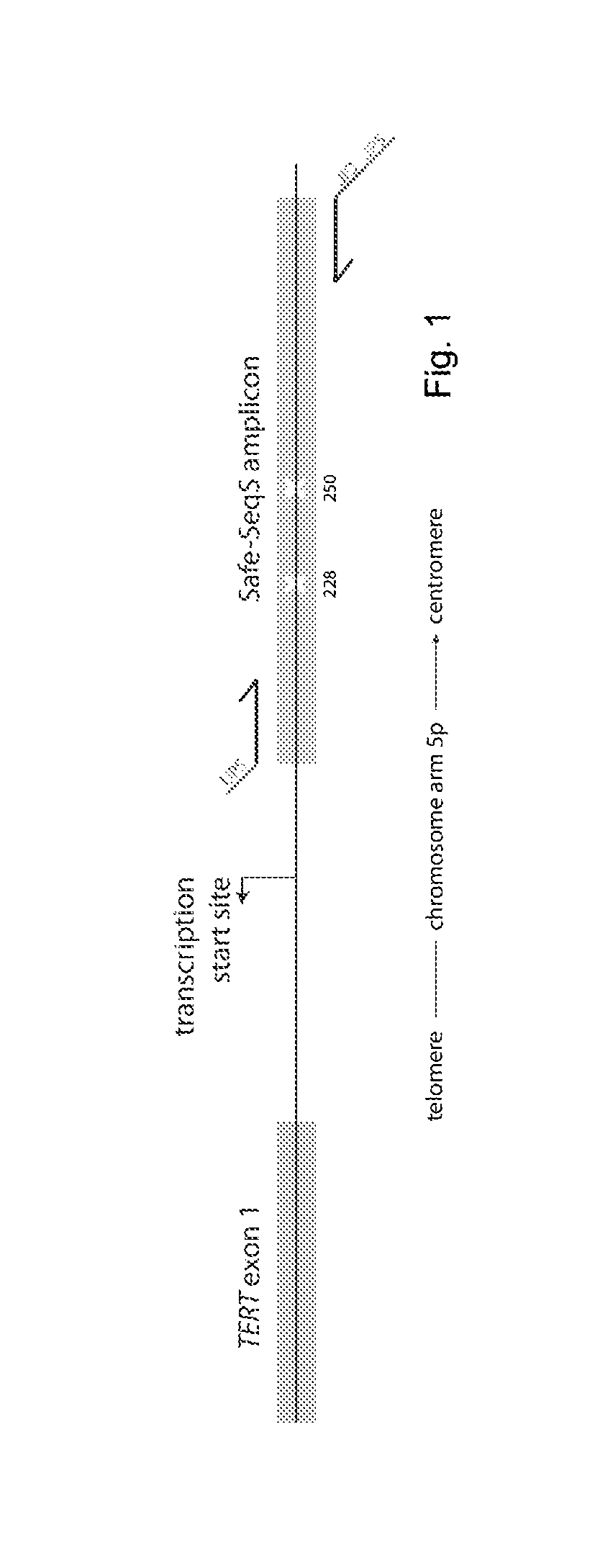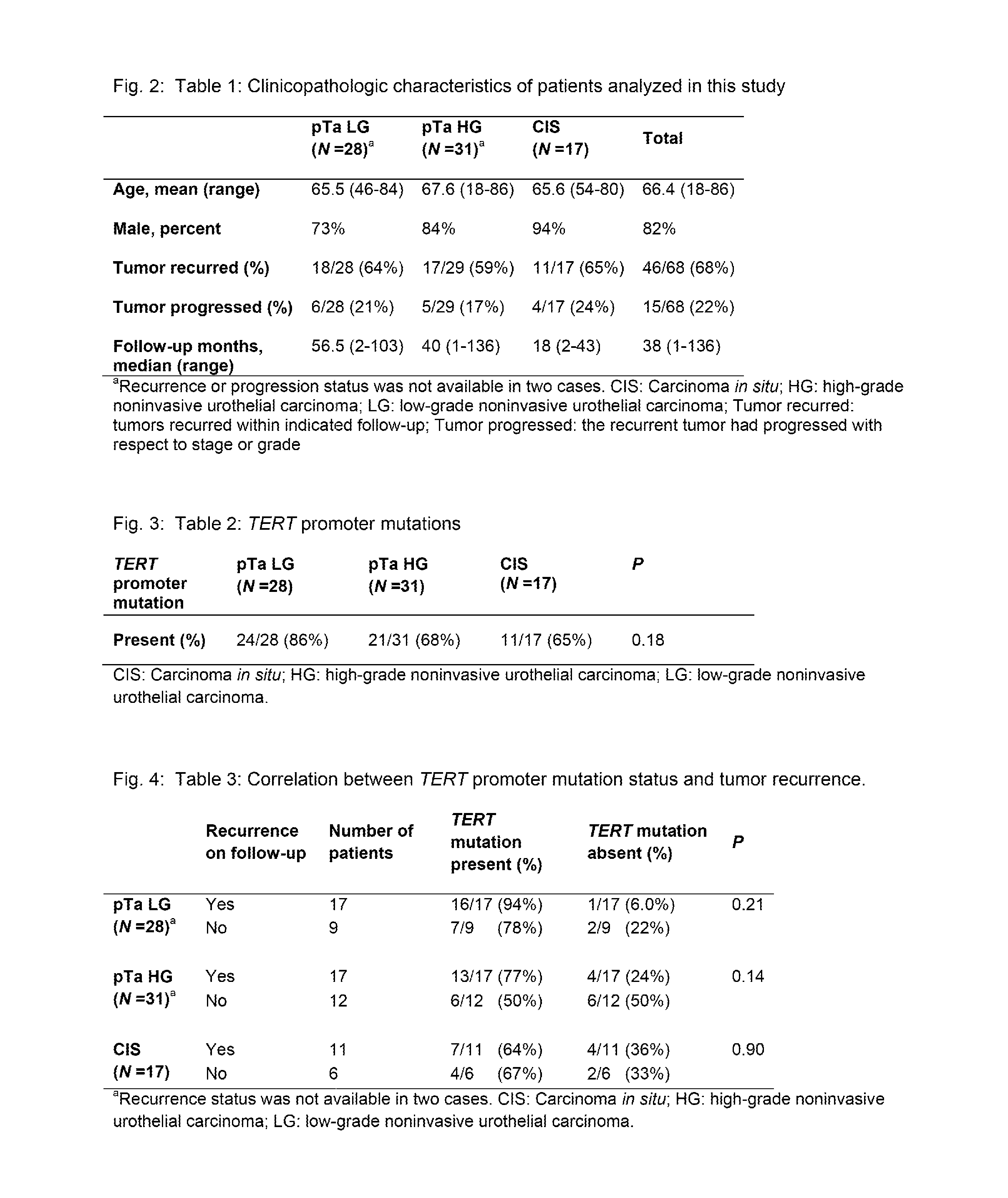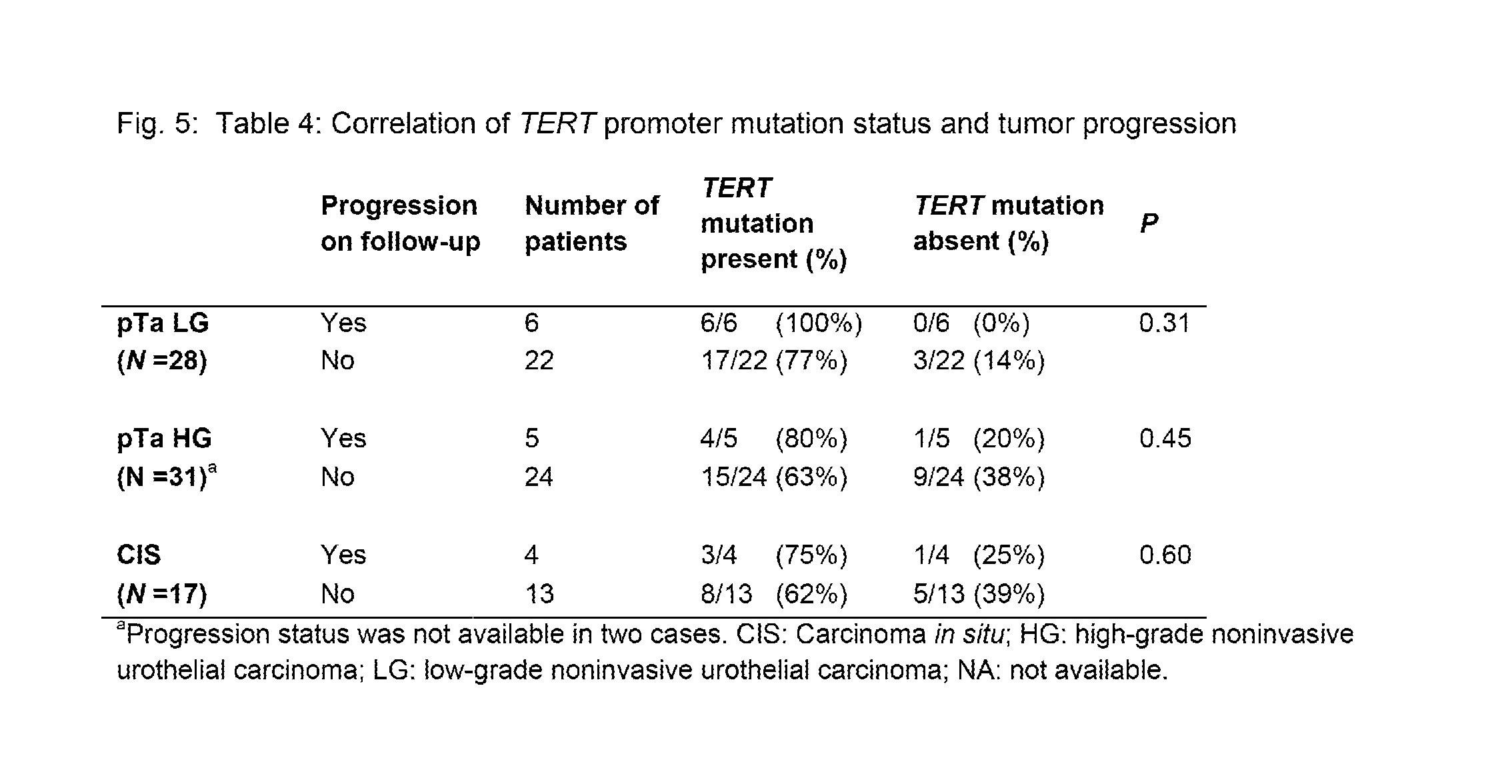TERT Promoter Mutations in Urothelial Neoplasia
a tert promoter and mutation technology, applied in the field of cancer, can solve the problems of limiting the wide-spread clinical use of low-grade tumors, poor detection performance,
- Summary
- Abstract
- Description
- Claims
- Application Information
AI Technical Summary
Benefits of technology
Problems solved by technology
Method used
Image
Examples
example 1
Materials and Methods
Patient Samples
[0030]This study was approved by the Institutional Review Board of Johns Hopkins University, School of Medicine. Two different sets of samples were analyzed in our study. The first sample set included 76 noninvasive papillary urothelial carcinomas and flat carcinoma in situ (CIS) lesions obtained by transurethral bladder resection (TURB) between 2000 and 2012. All specimens were rom the Surgical Pathology archives and were selected only on the basis of specimen availability. Pertinent patient demographics and clinical information were obtained from electronic medical records. All sections were reviewed by three urological pathologists (EM, SFF and GJN) to confirm the original diagnoses. To enrich for neoplastic cells within the tissues, representative formalin-fixed paraffin-embedded (FFPE) blocks were cored with a sterile 16 gauge needle and tumor areas showing at least 50% neoplastic cellularity were selected microscopically. For eight of the ca...
example 2
TERT Promoter Mutation in Papillary and “Flat” Noninvasive Urothelial Carcinoma
[0036]We used a massively parallel sequencing technology to determine the presence and representation of mutant TERT promoter alleles in urothelial cancers. A graphical depiction of the method is shown in FIG. 1 and detailed procedures are provided in the Materials and Methods. In addition to revealing whether mutations are present with a population of DNA templates, this technique provides an accurate determination of the fraction of mutant alleles in the sample. Clinicopathologic characteristics of the 76 noninvasive urothelial carcinomas analyzed in the first phase of this study are summarized in Table 1. They included 59 papillary tumors—28 low-grade (pTa LG) and 31 high-grade (pTa HG)—plus 17 “flat” urothelial carcinoma in situ (CIS). These patients were typical of those with this form of cancer; their average age was 66 years and most (82%) were males (Table 1).
[0037]TERT promoter mutations were ide...
example 3
TERT Promoter Mutation in Urine Samples
[0039]We next evaluated whether TERT promoter mutations could be identified in cells in the urine. As noted in the Introduction, urine samples are routinely taken at follow-up visits following TURB procedures to help determine whether residual tumor cells are present (via cytology or other methods). We first assessed the tumors obtained from 14 patients undergoing TURB for relatively early (non-muscle invasive) disease. Of these, 11 (79%) harbored TERT promoter mutations (Table 5), as expected from the evaluation of the first cohort (Table 2). All of the mutations in the second cohort were at either g.1295228C>T or g.1295250C>T (Table 5).
[0040]The 14 patients were monitored for recurrence at subsequent visits. Mutations were assessed in the cell pellets from the urines obtained at the first follow-up visit after TURB in these 14 patients, as described in the Materials and Methods. There was a striking correlation between the presence of a TERT ...
PUM
| Property | Measurement | Unit |
|---|---|---|
| Fraction | aaaaa | aaaaa |
| Fraction | aaaaa | aaaaa |
| Fraction | aaaaa | aaaaa |
Abstract
Description
Claims
Application Information
 Login to View More
Login to View More - R&D
- Intellectual Property
- Life Sciences
- Materials
- Tech Scout
- Unparalleled Data Quality
- Higher Quality Content
- 60% Fewer Hallucinations
Browse by: Latest US Patents, China's latest patents, Technical Efficacy Thesaurus, Application Domain, Technology Topic, Popular Technical Reports.
© 2025 PatSnap. All rights reserved.Legal|Privacy policy|Modern Slavery Act Transparency Statement|Sitemap|About US| Contact US: help@patsnap.com



